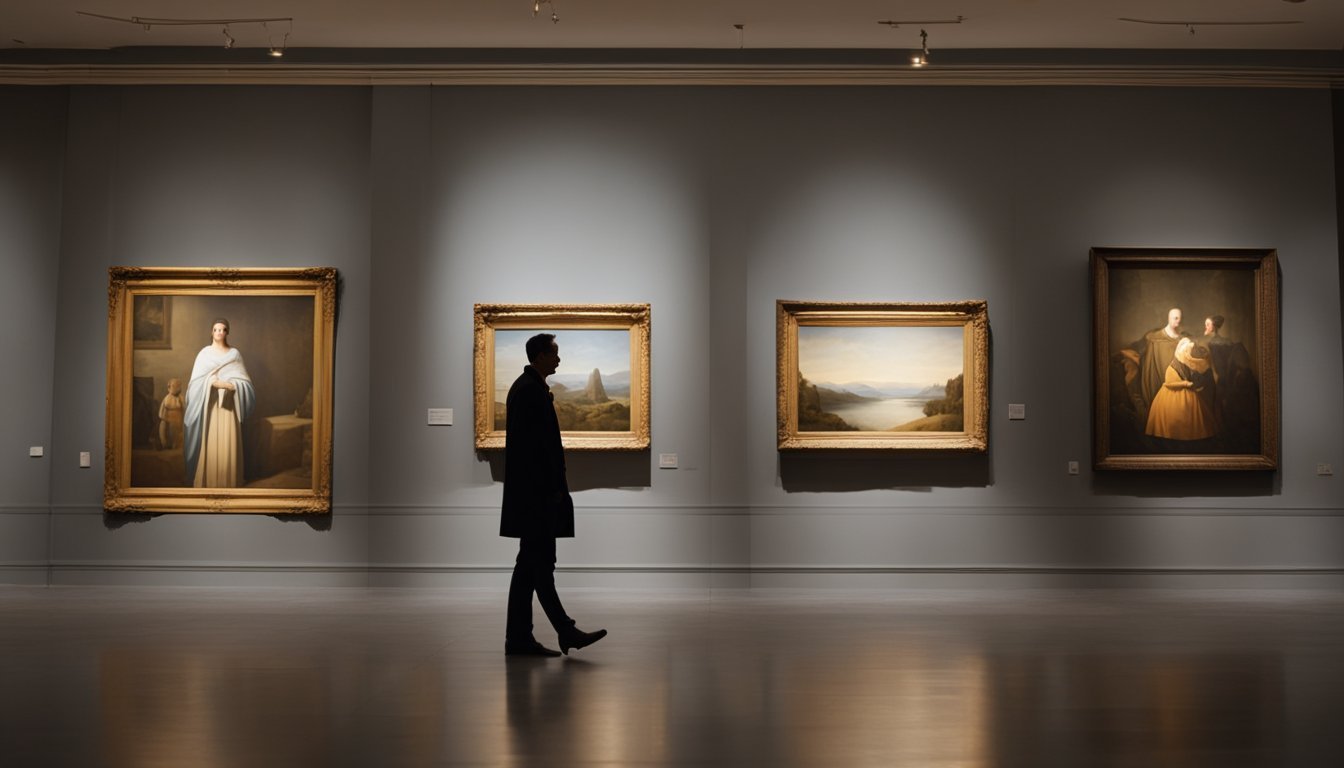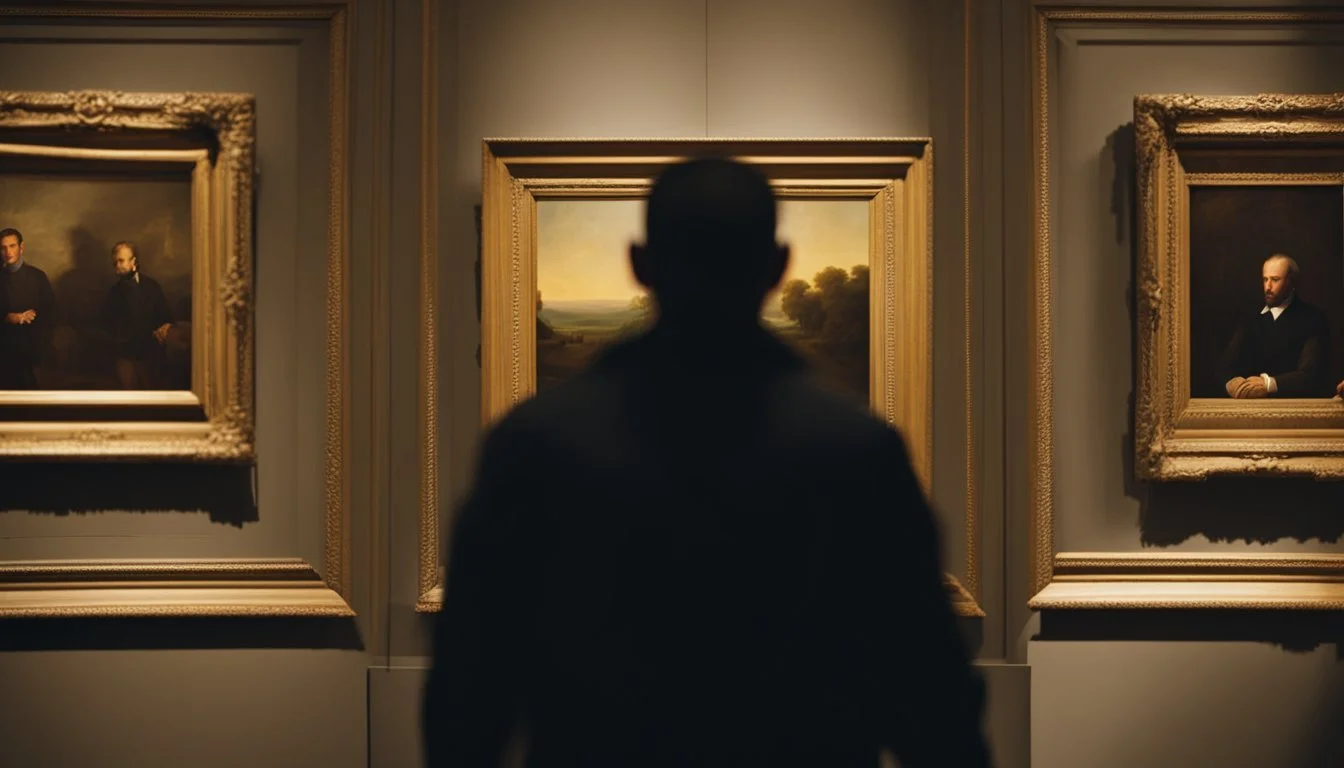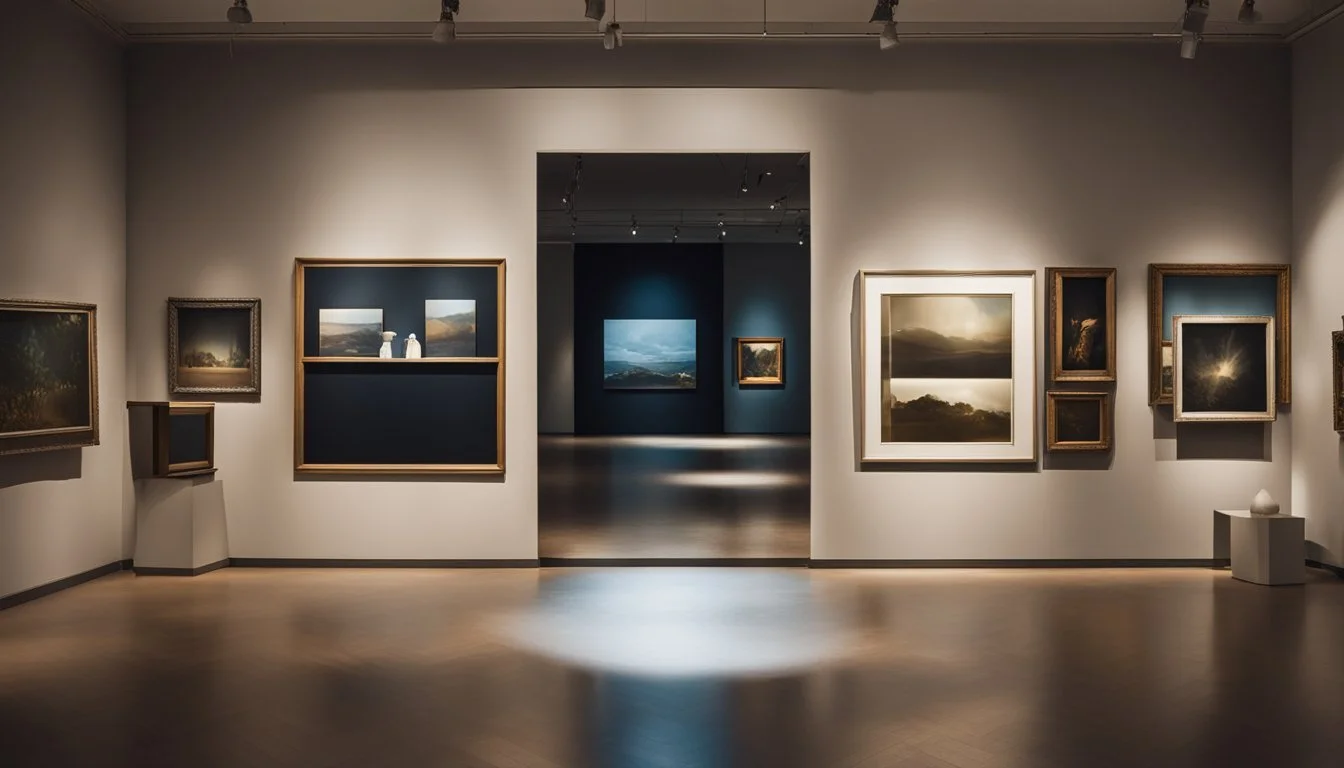6 True Crime Documentaries on Art Theft in Massachusetts
Intriguing Cases Unveiled
Art theft has long captivated audiences with its blend of mystery, high stakes, and cultural loss. Massachusetts, home to several renowned art institutions, has witnessed a number of high-profile art thefts that have garnered significant attention.
The fascination with these crimes has been captured in numerous true crime documentaries. These films not only delve into the heists themselves but also explore the broader implications for the art world and society at large. Readers will find insight into some of the most intriguing art theft cases through the lens of documentary filmmaking.
1) 'The Gardner Heist' by Ulrich Boser (2009)
Ulrich Boser authored "The Gardner Heist," an engrossing narrative about one of the most audacious art thefts in history. On March 18, 1990, two men disguised as police officers entered the Isabella Stewart Gardner Museum in Boston and stole 13 irreplaceable artworks.
These stolen pieces included works by Vermeer, Rembrandt, and Degas, valued at hundreds of millions of dollars. The heist remains the largest unsolved art theft in history, and the stolen works have never been recovered.
Boser's book not only details the events of the heist but also delves into the investigations and theories that followed. Through meticulous research, he presents various leads and suspects, shedding light on the complexities of the art underworld.
The Isabella Stewart Gardner Museum still displays the empty frames of the stolen artwork, a poignant reminder of the unresolved crime. Boser's work is significant for true crime and art enthusiasts alike, offering a detailed examination of this notorious case.
For more information on the book, visit its Wikipedia page.
2) 'Stolen: The Gallery of Missing Masterpieces' by Jonathan Webb
"Stolen: The Gallery of Missing Masterpieces" by Jonathan Webb explores the world of art theft with a focus on notable missing artworks. The book is a collaboration with Julian Radcliffe, head of the Art Loss Register, providing valuable insights.
The book presents over 200 missing masterpieces, including works by Vermeer, Rembrandt, and Titian. Each piece is accompanied by notes on the artist's life and the circumstances of the theft.
Webb’s narrative highlights the blend of petty crime and organized efforts that steal art. This book is an essential read for those interested in true crime and art history, offering a detailed look into high-profile art theft cases.
For further reading, visit the official website of Jonathan Webb's book.
3) 'The Art of the Heist' by Myles Connor Jr.
'The Art of the Heist' by Myles Connor Jr. is not just a memoir; it's an intriguing account of his life as one of America's most infamous art thieves.
Myles Connor Jr. grew up in Milton, Massachusetts, the son of a decorated policeman. Despite his promising start as a young rock musician, he gravitated towards a life of crime.
In his book, Connor recounts his involvement in numerous high-profile art thefts, showcasing his criminal ingenuity and charm. He offers readers an insider's perspective on the intricacies of art theft, often highlighting his near-legendary status in the criminal world.
Given his past, the FBI has considered him a prime suspect in the still-unsolved Isabella Stewart Gardner Museum heist, the largest art theft in American history.
Connor's insights into the criminal mindset and his detailed narratives make 'The Art of the Heist' a compelling read for those fascinated by true crime and art theft.
For more information, visit its Wikipedia page (2019).
4) 'American High Style: The Brooklyn Museum' Documentary
'American High Style: The Brooklyn Museum' (2010) showcases one of the world’s most remarkable costume collections.
The documentary provides an in-depth look into the Brooklyn Museum's fashion collection, focusing on significant pieces that reflect American women's styles throughout the 20th century.
Viewers are introduced to approximately eighty-five dressed mannequins, along with a variety of hats and shoes, illustrating the evolution of fashion.
The Brooklyn Museum is renowned for its extensive art collection, featuring roughly 1.5 million works.
This documentary sheds light on the museum's dedicated efforts to spotlight fashion as a form of art, narrating the stories behind each exhibit.
It offers a curated journey into how fashion trends have mirrored the nation's cultural shifts and artistic sensibilities over decades.
5) 'Art Thief: The True Story' by Sandy Naiman (2022)
"Art Thief: The True Story" by Sandy Naiman delves into the world of a notorious art thief operating in Massachusetts. The documentary sheds light on a series of high-profile thefts from local galleries and private collections.
Sandy Naiman provides a thorough investigation, exploring the motivations behind the crimes. The documentary combines interviews with law enforcement, art historians, and those close to the case.
Using a mix of archival footage and contemporary scenes, the film offers a compelling narrative. Viewers gain insights into how the thief meticulously planned and executed each heist.
The documentary also highlights the impact on the victims and the art community. Naiman's storytelling brings both the emotional and financial repercussions to the forefront.
For more information, visit IMDB.
6) 'The Art of the Steal' Documentary (2009)
"The Art of the Steal" is a documentary film directed by Don Argott. It spotlights the contentious relocation of the Barnes Foundation's prestigious art collection from Merion, Pennsylvania, to Philadelphia.
This collection, renowned for its modern and post-impressionist pieces, was estimated to be worth around $25 billion in 2009.
Dr. Albert C. Barnes, who amassed the collection, had specified terms in his will concerning its display and location. Despite these instructions, various powerful figures and institutions contested his wishes, leading to a prolonged and highly publicized struggle.
The documentary presents multiple perspectives, including those of journalists and art historians, illustrating the ethical and legal battles surrounding the collection's move.
It also reveals how $100 million in taxpayers' money was secretly allocated by the Commonwealth of Pennsylvania to support the relocation once a new board took control of the Foundation.
"The Art of the Steal" provides an in-depth look into the complexities and intrigues of the art world, making it a must-watch for those interested in legal battles over cultural heritage.
For more information, visit IMDb.
Historical Context of Art Theft
Art theft has a rich history that spans centuries, influencing both the art community and the broader cultural landscape. Notable heists have shaped security measures, art valuation, and public interest in stolen works.
Noteworthy Art Heists in History
Throughout history, several art heists have captured the public's imagination. The theft of the Mona Lisa in 1911 by Vincenzo Peruggia is one of the most famous, highlighting vulnerabilities in museum security. Another significant event is the 1990 Isabella Stewart Gardner Museum heist in Boston, where $500 million worth of art was stolen and remains unrecovered.
During World War II, Nazi art theft was rampant. The regime looted thousands of pieces, including works by Van Gogh, Monet, and Klimt. These historical heists have had lasting impacts on art recovery and the policies surrounding art protection.
Impact on the Art Community
Art theft greatly affects the art community by altering the perceived value and availability of masterpieces. When a famous piece is stolen, it creates gaps in public exhibitions and academic research. This can affect museums, galleries, and educational institutions.
Moreover, art theft drives the development of sophisticated security systems. Institutions now employ advanced technologies like motion sensors, AI surveillance, and blockchain tracking. The significant financial losses push insurers and collectors to adopt stricter measures.
Lastly, stolen artworks often emerge in black markets, where they are bought and sold by private collectors, further complicating recovery efforts. This underground trade influences the legal landscape, prompting more stringent international cooperation and legal frameworks.
Investigation Techniques and Law Enforcement
In the realm of art theft in Massachusetts, applying forensic methods and the involvement of federal and state agencies play critical roles. These elements provide structure to the pursuit and recovery of stolen art pieces.
Forensic Methods
Forensic methods are essential in solving art theft cases. Techniques such as fingerprint analysis, trace evidence, and digital forensics are commonly used.
Fingerprint analysis helps identify suspects by matching prints found at the crime scene with known databases. Trace evidence involves analyzing microscopic materials like fibers or dust to trace the origins or movements of stolen items.
Digital forensics involves scrutinizing digital communications and transactions. Investigators may follow online art sales and social media footprints to uncover illicit activities. Techniques evolve constantly to keep pace with advances in technology, providing robust tools to combat sophisticated criminals.
Role of Federal and State Agencies
Federal and state agencies collaborate to tackle art theft. The FBI's Art Crime Team is a specialized unit focusing on tracking and recovering stolen artworks.
At the state level, agencies work closely with museums and local police departments. They create detailed databases of stolen works, making it easier to track and identify missing pieces. Partnerships with international law enforcement bodies such as Interpol amplify their efforts, especially for art trafficked across borders.
They also rely on informants and public tips to crack cases. Through joint task forces and shared resources, these agencies provide a comprehensive approach to solving art theft crimes in Massachusetts.
Famous Massachusetts Art Thefts
Massachusetts has been the backdrop for some of the most notorious art heists in history, with thefts from renowned institutions capturing global attention.
The Isabella Stewart Gardner Museum Heist
On March 18, 1990, two men disguised as police officers entered the Isabella Stewart Gardner Museum in Boston and stole 13 pieces of art valued at approximately $500 million. The stolen pieces included works by Rembrandt, Vermeer, Degas, and Manet. Despite extensive investigations, the art remains missing. This heist is depicted in the Netflix documentary This Is a Robbery. The empty frames of the stolen paintings still hang in the museum as a poignant reminder of the loss.
Theft from the Massachusetts Historical Society
In 1974, the Massachusetts Historical Society suffered a significant art theft when valuable artifacts and artworks were stolen. Items included rare manuscripts and letters from historical figures. The society worked diligently with law enforcement to recover some pieces, but many remain missing. Though less publicized than the Gardner heist, this theft also underscores the vulnerability of cultural heritage institutions to sophisticated thefts. Their legacy still influences current security measures in museums and historical societies.







